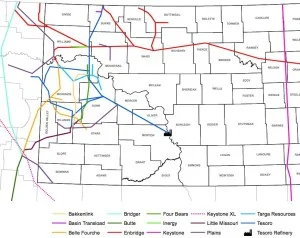Hess plans on committing nearly half of its $5.8 billion capital budget to unconventional shale resources in 2014, with $2.2 billion slated for development of the Bakken. That's the same figure Hess earmarked for development spending in the formation for 2013, but the company's strategic focus is slightly different this year as shale costs shrink.
Although overall investments in infrastructure are down slightly, Hess still plans on allotting $350 million for completing the expansion of the Tioga Gas Plant and associated pipeline and compression projects.
Also read:Alliance Pipeline's Tioga Lateral Is Online & Moving Gas Onto Its Mainline System
“Greg Hill, President and COO, said, “as a result of lower well costs and decreased investments in infrastructure projects we plan to operate 17 rigs versus 14 last year and to bring 225 new operated wells online in 2014 compared to 168 in 2013.”
The other nearly 10% of Hess's capital budget for unconventional shale resources will be in the Utica Shale in Ohio, with $550 million for drilling approximately 35 wells targeting the wet gas window. That's up $95 million from the company's investment in the area last year, but that does not necessarily mean that the company's focus is shifting away from the Bakken. It does indicate however that Hess is diversifying its interests in unconventional shale resources.
Read the full release at hess.com





